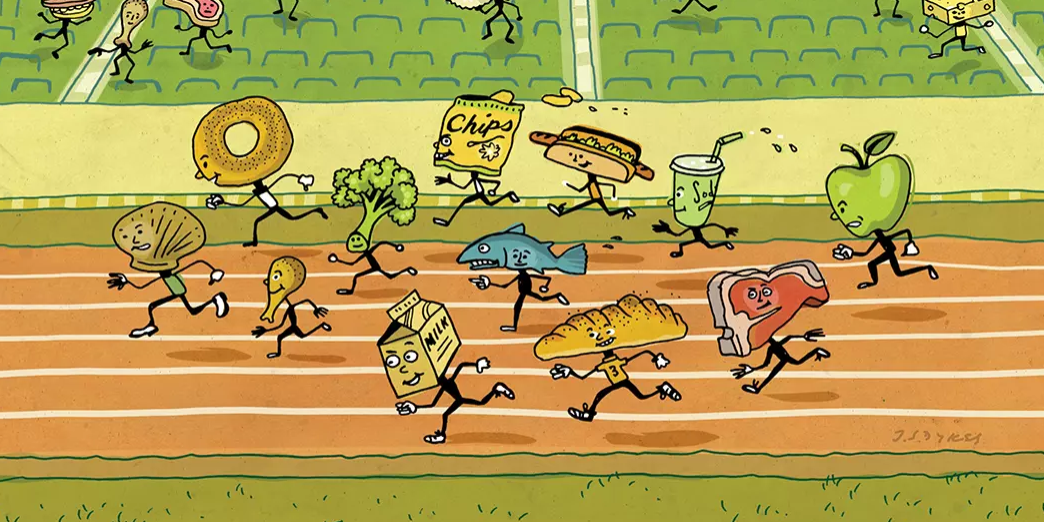Seeds of Hope
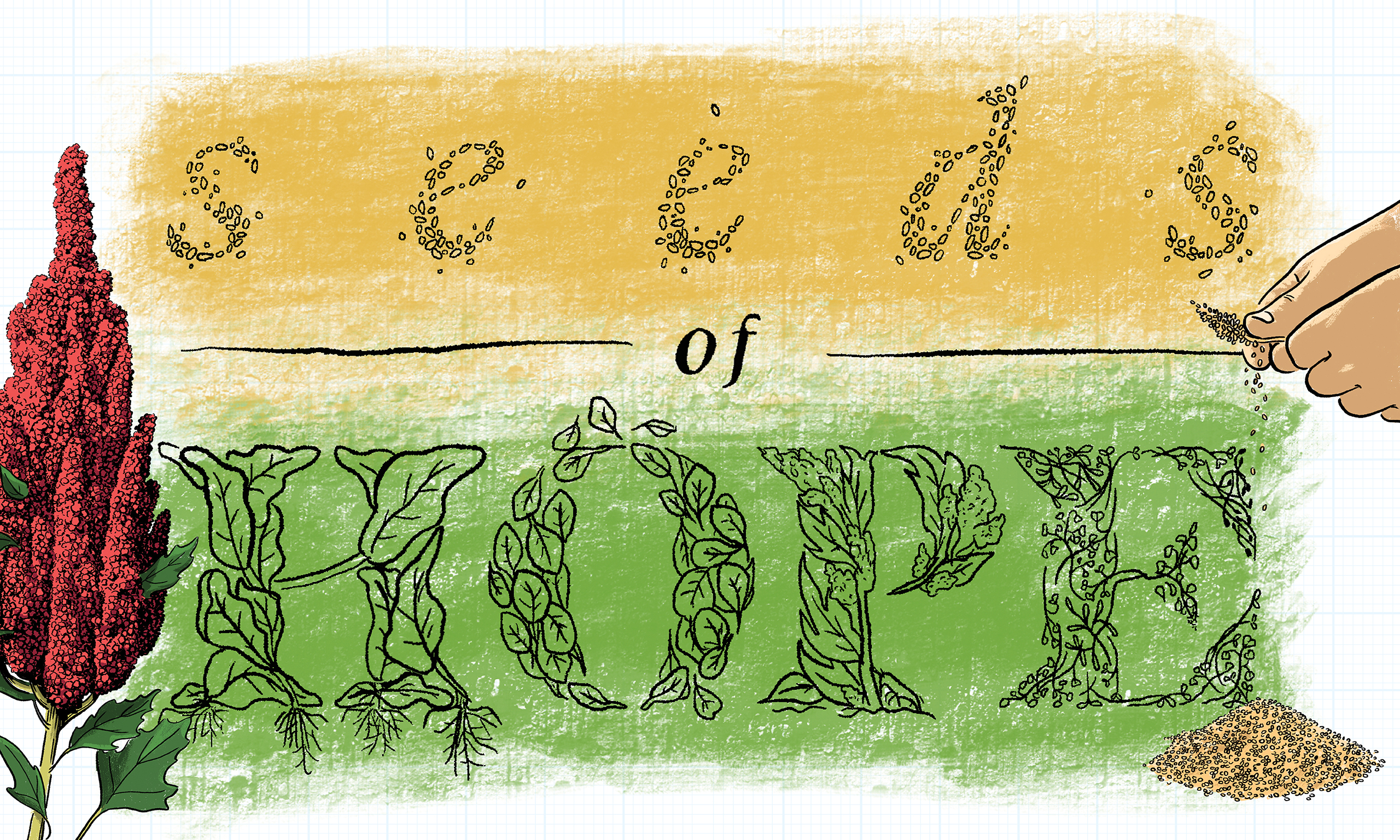
Abroad and closer to home, BYU research is sprouting in a variety of promising solutions to food and nutrient scarcity.
By Sara Smith Atwood (BA’ 10, MA’ 15) in the Summer 2022 Issue
Illustrated by Arthur Mount
When New Jersey school teacher Joan Perry saw tiny green quinoa shoots sprouting in the salty, sandy soils of Guyana, it was a miracle—and she knew it.
Like most of us, Perry hadn’t even heard of quinoa until the 2010s, when the tiny round grain trended as a “superfood” packed with protein and vitamins. Perry, a native of the South American country of Guyana who came to the US as a teenager, added the hardy seeds to her salads because they fit the plant-based diet embraced by her Seventh-day Adventist faith.
Those tiny seeds became so much more to her in 2014, when Perry and her nine siblings inherited 350 acres of farmland in Guyana. Perry wanted to use her portion to do good in the world, and when a colleague suggested planting quinoa, she felt inspiration from God.
But when Perry approached the Guyanese agricultural ministry about importing seeds, she was almost laughed away. Quinoa had never been grown in Guyana. The tropical nation, located on the continent’s northeastern shore, was home to saltier soil and lower elevation than the grain’s native Andes habitat. “But I was determined,” Perry says. “And I know the God I serve. I would leave no stone unturned.”
Perry’s research and prayers led her to BYU’s Eric N. Jellen (BS ’86), a crop geneticist. His team was the first to map the quinoa genome, and they were elbows deep in crossing domesticated quinoa with wild varieties to create drought-hardy hybrids that could grow across the globe.
The Guyanese agricultural ministry eventually agreed to a feasibility study of the BYU seeds. Seven sites tested. Seven successes.
That tiny grain, it turns out, just might be a viable solution to alleviating hunger in Guyana and around the world.
Hunger in today’s world isn’t always about a lack of calories; often, it’s a lack of nutrients. “You see those deficiencies in the developing world,” Jellen says. Tropical countries, he says, rely on starchy foods like yuca and cocoyam. In the South Pacific and Southeast Asia, it’s rice. In West Africa, corn. These staples are “vitamin and protein deficient,” explains Jellen. “It fills their bellies, but they’re starving for protein” and essential nutrients like iron, vitamin K, and B vitamins. Even in the United States, food deserts—areas where it is difficult to access affordable food—make it hard for those experiencing poverty to get adequate nutrition. Nutrient deficiencies can lead to severe health problems—from low birth weights and short stature to cognitive impairment, diabetes, hypertension, rickets, and blindness.
“If we are able to produce quinoa, then we can save the next generation from falling through the cracks of malnutrition.”
—Joan Perry
Food and nutrient scarcity are not new challenges. But throw climate change into the mix— with farmland and staple crops threatened by drought, increasing temperatures, and rising sea levels—and it’s critical to look for creative approaches to addressing hunger at home and abroad.
BYU researchers across campus are doing just that. They’re planting seeds—in Jellen’s case, literally—in the hope that their efforts will eventually bear the fruit of sustainable, localizable ways to address nutrient deficiency and feed a hungry world.
Going with the Grain
Guyanese soils aren’t the only surprising destination for BYU-bred quinoa seeds, grown just a half mile south of campus in the BYU Life Sciences Greenhouse. Jellen’s team has sent seeds to farmers and researchers in Kenya, Malawi, Pakistan, Saudi Arabia, Vietnam, Thailand, and other places where it is too expensive to import the grain.
It started in Morocco. In the early 2000s Rick Jellen’s quinoa work was just sprouting; he’d spent the previous decade mapping the genetic ancestry of oats. When in Morocco hunting for an elusive wild oat variety, he hit on something more pressing: Moroccan researchers told him that drought and rising temperatures were leading local subsistence farmers to “abandon their protein crops, the traditionally grown legumes like chickpeas and lentils.” So Jellen thought: Quinoa doesn’t mind dry earth. Why not see how it does in Morocco?
The plants struggled at first, but after Moroccan researchers spent two decades making selections among the cross-pollinating plants, the breeding project is thriving. Now short green plants, ripe with rusty-hued clumps of protein-rich seeds, line fields tended by local farmers—it’s a success story Jellen and his team hope to see replicated across the globe.
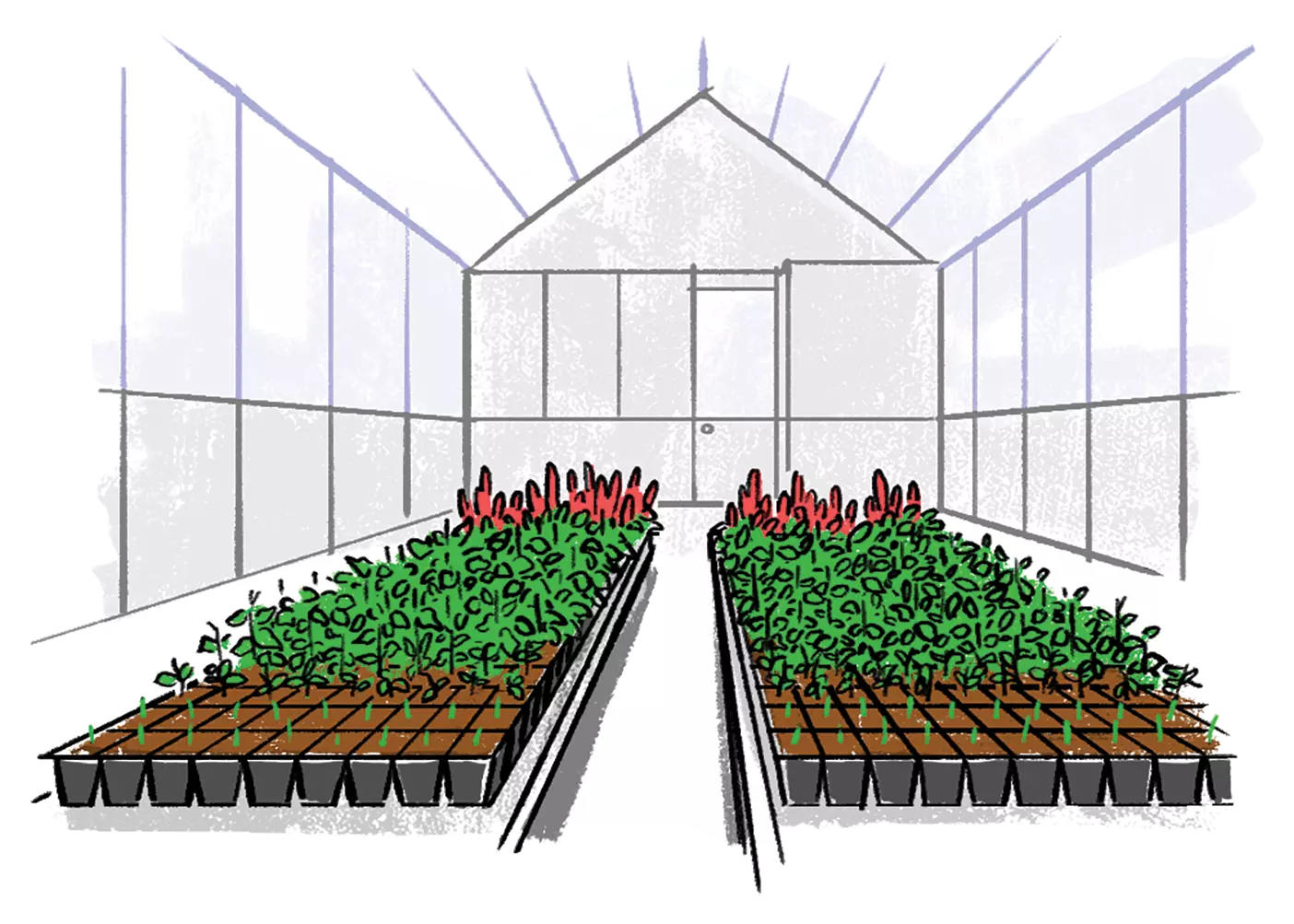
“Our goal is to fundamentally alter the adaptation of quinoa so that people anywhere in the developing world, which are mostly low-elevation, tropical, and subtropical environments, can grow quinoa,” Jellen says.
The biggest challenge is heat, followed by humidity and salinity. Quinoa has the genetic aptitude to withstand scorching temperatures, but after millennia of cultivation atop the Andes at 12,000 feet above sea level—roughly the altitude of the Mt. Timpanogos summit—most strains “lost their heat tolerance,” explains Jellen. However, the trait lives on in wild quinoas throughout North America. So Jellen, his BYU colleagues P. Jeff Maughan (BS ’90, MS ’91) and David Jarvis (BS ’04, MS ’06), and an army of undergrads collect wild quinoa—they’ve hunted down hundreds of strains, including from the Mojave Desert, the Gulf of Mexico, the plains of Oklahoma, and the North Atlantic coast—and bring them back to the greenhouses to play plant matchmaker.
“That’s what you do at BYU,” laughs Jarvis. Crossed with commercial-grade crops from Bolivia, the wild varieties bring needed adaptations, like tolerance for heat or humidity, while the domesticated grain produces larger seeds that grow in dry soil. The team has created about 10 successful crosses so far, providing seeds “to growers in countries like Malawi or Guyana” to breed “plants that grow well right where they are,” says Jarvis.
Many growing programs were disrupted by the COVID-19 pandemic, including Joan Perry’s endeavors in Guyana. But to Perry, the BYU seeds are seeds of hope. The Guyanese government now has funding set aside for quinoa. The hope is to provide better nutrition locally and, once the grain is established in Guyana, to join other South American nations in exporting it to nations in need. “If we are able to produce quinoa,” Perry says, “then we can save the next generation from falling through the cracks of malnutrition.”
Hope Floats
One building over from the quinoa breeding plots is the lab of greenhouse director Matthew Arrington, a BYU professor of plant and wildlife sciences. There the leafy bright greens of spinach, chard, basil, lettuce, and tomato plants grow in vertical towers from the floor up. The setup has everything a healthy plant needs: steady full-spectrum light, a curated fertilizer mix, and ample water. The only thing missing? Soil.
Hydroponics—growing plants without soil, their roots soaking up nutrient-rich water—creates produce year-round with limited space and resources. “Plants grow a third to half times faster than [when] they are in the soil,” Arrington says—with 2 percent of the water required in traditional agriculture and 5 percent of the fertilizer.
At BYU Arrington is mentoring life-sciences students in using these advantages to feed vulnerable populations. For the Food and Care Coalition, a food bank and homeless shelter in Provo, they’ve designed an indoor hydroponics system to produce lettuce, herbs, and tomatoes. It’s set to be installed later this year. And they’ve recently submitted designs for an indoor farm to Lakota tribes in North Dakota.
BYU-baked hydroponics designs will soon cross international borders. Arrington worked with students, including Maquelle K. Drummond (’23) and Connor T. Haderlie (’23), to design a floating aquaponics system to address micronutrient deficiencies in developing nations. Aquaponics is hydroponics, but with fish—a synergistic model in which the fish provide fertilizer for the plants, and the plants filter the water for the fish.
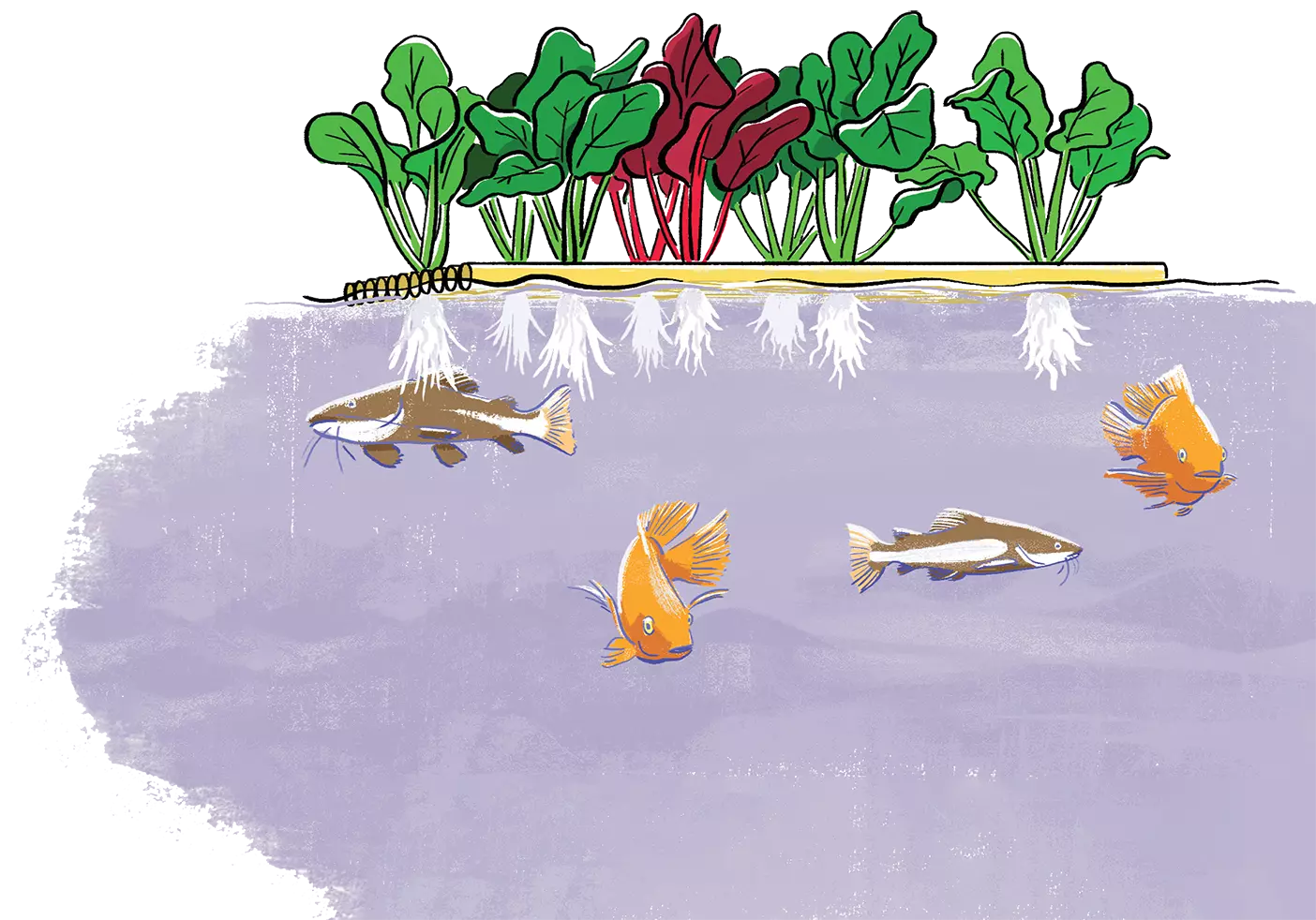
This summer BYU is bringing the schematics to Nurturing Nations, a school and safe house for children with disabilities or rescued from trafficking in Kofi Kwei, Ghana. Percy Gogoe, the school’s director, traveled to Provo to suggest readily available materials. Bamboo will float the system in the school’s fishpond, and empty water bottles will hold the plants. Twine or even shredded plastic bottles and bags will be used as fasteners.
Nurturing Nations was founded 10 years ago by Laura Belk (’09), wife of biology professor Mark C. Belk (BS ’85, MS ’87), after the couple adopted a Ghanaian child with Down syndrome. The school educates more than 230 underserved children, and the children’s home and special-care house provides for 18 students who have disabilities. Belk, a fish biologist, oversaw the addition of a fishpond there last year.
“Many of these children have not had good nutrition; their growth is slow,” says Belk. “We try to provide that nutrition.”
The fishpond, home to catfish, Nile tilapia, and African bony tongue, already supplies protein. Add aquaponics, and the pond does “double duty,” says Belk. “It raises the fish and provides the leafy greens.” This setup “has the potential to make the campus self-sustaining—not just providing food, but also providing cash” to the school when they sell what they grow.
The seeds will come from local markets. “Canary chard and Swiss chards work really well,” says Arrington. So do Malabar spinach and kale. “They have anthocyanins in them, they have vitamin A in high enough numbers, and a lot of iron. There’s some local carrots that can grow in the system.”
In August 16 BYU students (including Drummond and Haderlie) will travel to Ghana to train Nurturing Nations staff and students in operating and maintaining the raft. Drummond and Haderlie also created a simple peer-reviewed aquaponics manual for distributing in the community “to ensure the longevity of this aquaponics system . . . so that it would actually be helpful for the people instead of end up as floating waste a month after we left,” she says.
They’ll also begin work on a commercial-grade fish hatchery and aquaponics system, with the goal of feeding local children, filling markets with nutritious food year-round, supporting the school, and providing vocational training to the students there. The project will be overseen by Ghanaian Samuel K. Lumor (’27), a BYU PhD candidate in biology.
Arrington and Belk are blown away by the passion of students like Drummond and Lumor.
“Students want to implement the skills that they have learned,” says Belk. “They have been so blessed, and they have knowledge and energy to bless others.” Arrington says students are eager to address world hunger. Hydroponics gives them a tangible skill set to apply. “We can’t solve all the problems,” he says, “but we have the tools to solve some of them.”
Food for Thoughts
Food and nutritional insecurity aren’t problems only in the developing world—they just look a little different closer to home.
BYU public-health professor Lori A. Spruance still remembers her jealousy decades ago when she spied the contents of an elementary-school classmate’s lunch box: a solitary king-sized Snickers bar. She couldn’t believe his luck—to a second grader, the chocolate was a dream meal.
Today Spruance recalls that memory with different eyes. “Maybe he was jealous I had a whole sandwich to eat. There might not have been a parent at home helping him pack his lunch, or they may not have had enough food—and there’s no way he could have focused when all he had eaten was 30 grams of sugar.”
The image is still vivid for Spruance as she researches and advocates for better access to school breakfasts in Utah. The benefits of learning on a full stomach have been well documented, but the Beehive State falls dead last when it comes to the percentage of students qualifying for free and reduced-price breakfasts who actually show up to eat.
“School-meal programs can help alleviate food insecurity for families,” says Spruance. Children in food-insecure homes can’t always count on their next meal. Their parents may make tough choices between spending money on bills or on nutritious food—and when you’re counting pennies as prices soar (thanks, inflation), working long hours, and struggling to get to a well-stocked grocery store, convenience-store candy is a lot more accessible than fresh produce. Spruance estimates that roughly one in five students in Utah experiences some degree of food insecurity.
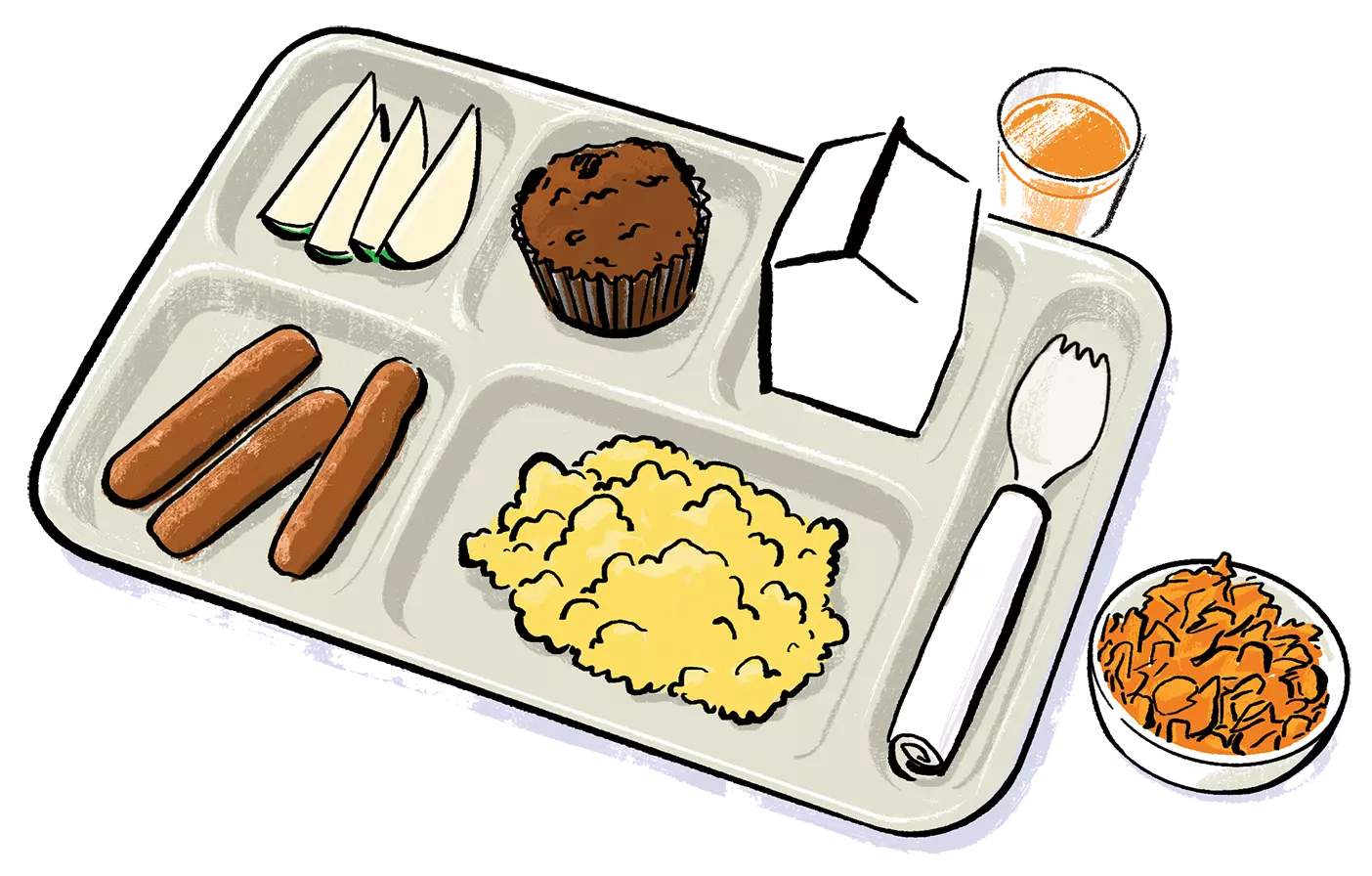
School meals, she says, aren’t perfect—though with requirements to include fruits, vegetables, and whole grains, they are nutritionally sound. But coming to school early for breakfast can carry stigma. “It’s like, all the poor kids go into the cafeteria and get breakfast,” says Spruance. “Or they have to make decisions like, ‘I could play basketball with my friends on the playground or eat breakfast.’ And then there [are] logistical issues, like if their bus is late.”
To address these obstacles, Spruance added her voice and research to an advocacy group helping pass a series of Utah state bills to promote alternative breakfast models. These models bake breakfast into the school day, offering the meal to all students after class starts.
“Alternative breakfast models have shown to increase participation,” Spruance says. “And then there’s reduced absenteeism, reduced behavioral issues, better test scores.”
“If kids have a healthy meal, they can learn, they can grow.”
—Lori Spruance
This legislation—called the Smart Start Utah Breakfast Program—passed in early 2020. Spruance and her student team were set to evaluate the health effects by measuring the levels of nutrients in elementary students’ skin. The COVID-19 pandemic temporarily shut down that study—but, perhaps surprisingly, opened the door to a greater public awareness of school-meal programs.
“Food insecurity rates have gone up significantly during the pandemic,” Spruance says. School-meal fees have been waived for all students in Utah since early 2020, and Spruance dove into the data: she saw a 43 percent increase in school-lunch participation and a 15 percent increase in breakfast.
“These are needed programs for a variety of reasons,” she says. “For some people it’s about food insecurity. For others it’s about not having to pack a lunch when life is chaotic.”
Now she’s collecting data to pinpoint exactly why participation increased, and she’s examining the potential costs and benefits of continuing to provide at least one free, healthy meal to all Utah students each day.
“If kids have a healthy meal, they can learn, they can grow,” says Spruance. “They can become the people that they need or want to be. There are kids out there who need access to these programs. It means a lot to me to be able to advocate for them—so that we can eventually reach the kid with the king-size Snickers bar.”
Playing a Part
BYU quinoa researcher Jeff Maughan recalls traveling to Huancayo, a mountainous region in Peru, to visit remote quinoa fields overseen by a Lima native who spent decades breeding seeds to improve crop yields.
“The local farmers all come out to talk [quinoa],” bringing their children to meet their American visitors and play in the fields.
The quinoa team’s collaborators abroad, Maughan says, likely let BYU researchers into their fields because “we had no commercial interest in the process.” Instead, he says, they were guided by an academic calling and spiritual mandate to improve a crop that can feed future generations. Even immersed in the nitty-gritty science, Maughan feels a higher meaning in his work—embodied by the children playing in the fields.
“These children are the ‘end product’ of quinoa”— themselves the seeds of the future, says Maughan. “I don’t think I’m solving world hunger, but I’m playing my part, and that’s good enough for me.”
Chronic hunger, locally and abroad, is complicated and multifaceted. Each region, each problem, and each hungry child needs a tailored solution. BYU researchers don’t pretend to have all the answers, but Jellen says they still feel called to at least try.
“There’s just a lot more that we could do and that we should be doing . . . as followers of Jesus Christ to try and address [food insecurity],” he says. And we can get there, one seed at a time, with “enough effort, enough brain power, being focused on these problems.”
Tackling Hunger
Here are six other ways BYU researchers are working to protect food supplies and alleviate food insecurity:
Mongolian Food Storage
Mongolia’s growing season is less than 98 days long. The harvest often spoils, leading to micronutrient deficiencies among nomadic groups. In 2018–19 food-science professor Bradley J. Taylor (BS ’99) led a BYU team to Mongolia to teach safe and effective food-preservation techniques.
SNAP-y Class
Prepping nutritious food on a budget is hard—even more so without a kitchen. Nutritional-science faculty James D. LeCheminant (BS ’99, MS ’01) and Rickelle Richards partnered with Utah State University Extension to adapt the USDA’s Supplemental Nutritional Assistance Program (SNAP) education curricula for transient populations. They and their students are teaching at Provo’s Food and Care Coalition shelter and studying how the program affects residents’ eating, exercise, and health.
Salty Solutions
Soils throughout the world are getting saltier. Most crops don’t grow well in salinity, so this forecasts trouble for food supplies. But by introducing salt-tolerant bacteria to roots, microbiologist Brent Nielsen (BS ’80) has successfully grown plants in salty soils.
Stabilizing Maize
Farmers lose about 5 percent of corn yields to collapsed stalks. Mechanical-engineering professor Douglas D. Cook received $10.3 million in funding from the National Science Foundation and the Department of Agriculture to study the biomechanics of stalk strength.
Full Stature
About a third of Tanzanian children don’t reach their full stature because of undernutrition. Public-health professors Benjamin T. Crookston (BS ’03, MPH ’06), P. Cougar Hall (BS ’98), and Joshua West recently evaluated efforts by nonprofits to address this problem, finding that a mass-media educational and counseling campaign resulted in healthier children and better-supported mothers.
Facing Drought
In the face of drought in the western United States, an interdisciplinary team including Bryan G. Hopkins (BS ’90, MS ’91) and Neil C. Hansen (BS ’92, MS ’94) studies potato, wheat, and alfalfa to optimize yield with less water; Ryan Stewart is looking at pinyon pine and prickly pear cactus as potential drought-resistant crops.
Feedback Send comments on this article to magazine@byu.edu.




